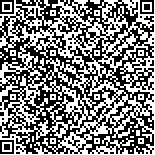下载中心
优秀审稿专家
优秀论文
相关链接
摘要

本文评述了目前常用的遥感估算地表蒸散方法,包括地表能量平衡模型、Penman-Monteith类模型、温度-植被指数特征空间方法、Priestley-Taylor类模型和其他方法。然而使用这些方法估算地表蒸散时会面临严重的尺度效应,而产生尺度效应的根本原因之一是地表异质性,在分析了非均匀下垫面对水热通量遥感反演造成的影响后,介绍了面积加权、校正因子补偿与温度降尺度3种尺度误差纠正方法;并从地面观测实验的角度简述了非均匀下垫面水热通量真实性检验的研究;最后探讨了将来建立更具时空代表性的非均匀下垫面地表蒸散遥感估算模型可能会面临的一些挑战。
This review surveys the most currently used evapotranspiration estimation methods based on remote sensing. The methods are divided into different categories, including surface energy balance models, Penman-Monteith models, land surface temperature-vegetation index space methods, Priestley-Taylor models, empirical statistical methods, complementary methods, and land process assimilation models.
These methods are mainly focused on two problems. The first problem is how to deal with aerodynamic surface temperature used in gradient diffusion equation. One-source models have two major solutions. One is to use remotely sensed radiative temperature as a direct substitution for aerodynamic surface temperature or use semi-empirical relations to obtain the surface-atmospheric differential temperature. In two-source models, the heat fluxes are decomposed by component temperature. The second problem is how to calculate surface resistance that influences heat flux exchange from the soil surface and canopy layers. This process is complicated to calculate at the local scale. Basing from the two problems, scientists combined the features and superiority of remote sensing, such as the relationship between various vegetation indices and surface parameters with the fundamental theory of these methods, and developed these methods from saturated surface toward unsaturated surface to calculate evapotranspiration.
However, severe scale effects emerge when these methods are used in heterogeneous surfaces. Surface heterogeneity influences the driving force of evapotranspiration estimation. Thus, three methods to correct scale error over heterogeneous surfaces are shown in detail:area weighting method, correction factor method, and land surface temperature downscaling(or thermal spatial sharpening) method. The core concepts of these methods are to couple high and low spatial resolution satellite data and statistically quantify the inhomogeneity in mixed pixels to correct the scale error in evapotranspiration estimation. In meteorological science, land process models using mosaic(or area-weighted method) and statistical dynamic methods are developed for heterogeneous surfaces. In the statistical dynamic method, one single or two mutually independent surface parameters or atmospheric forces are regarded as random variables. Consequently, their spatial distributions are expressed as probability density function to be melted into evapotranspiration retrieval models. These ideas are worthy to be adopted in remotely sensed evapotranspiration estimation.
As another important part of evapotranspiration estimation, the progress of turbulent heat flux validation research over heterogeneous surfaces is introduced at length from the angle of observation experiments. The measured heat fluxes possibly originate from source areas instead of in situ pixels. Thus, the traditional validation method that compares the retrieved pixel value with the observation value to evaluate result accuracy may cause uncertainty. Some schemes are developed using footprint models to determine the scope and weight of source area pixels and decrease the uncertainty in validation. Moreover, we provide a brief introduction of the basic principles of the footprint models that are mostly used in remote sensing in the present case. These models include Eulerian analytic flux footprint models and Lagrangian stochastic trajectory approach.
Finally, we discuss the challenges that researchers may encounter in the future to develop representative models of remotely sensed evapotranspiration retrieval over heterogeneous surfaces.

